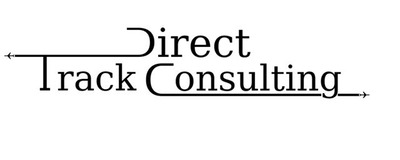Over the last few weeks we have had a look at the GPS system and considered some of its outstanding applications. Coupled with this broad list of capabilities, the extent of GPS integration through out our society has been equally impressive.
The ubiquitous presence of GPS technology and high levels of availability have created a sense of confidence in the system that is a little concerning.
As we considered in a previous article, the GPS system itself is no longer owned and operated by a single military power reserving the ability to withdraw the signals without warning. New commercial off the shelf GNSS/GPS receivers now have multi constellation capability, allowing the user to switch between the GPS, GLONASS, BEIDOU or GALILEO network of satellites at will.
This system redundancy, along with assurances from the United States that the GPS service will not be denied without warning, has relieved a serious concern within safety critical industries, such as aviation. With justifiable confidence in the integrity of the signal and the removal of the Selective Availability function, aviation authorities have started to develop instrument approaches into airports where previously there was no viable instrument approach available. These new instrument approaches have saved air operators a lot of time and money by improving their ability to operate in bad weather.
The major Air Traffic Control system upgrade currently underway in the United States (Next Gen) is heavily reliant on GPS.
So, the availability of the GNSS signal issues has been resolved with assurances of continuous broadcast and multiple system redundancy.
This brings us to the signal itself.
Dr. Charles Curry, of Chronos Technology, compared the power level of the GPS signal arriving at your hand held receiver as to that of the power a 20 watt light bulb generates 20,000 kilometers away.
The satellites that produce the GPS signals are in orbit 20,000 kilometers above the earth. That is a long way for the GPS signal to travel even without any obstacles. Now consider that the signal must pass through the ionosphere. The ionosphere shields the earth from much of the solar radiation generated by our Sun. The absorption of this solar energy stimulates electromagnetic activity that has a direct impact on radio waves. Short wave radio operators regularly bounce their radio signals off the ionosphere in order to increase their effective range.
As the GPS signal is this weak, it is easily subject to radio interference. The interference can completely ‘block’ the signal, or just distort it sufficiently as to corrupt the position or time information. Most GPS receivers will be able to alert you to the fact that the signal information has been compromised and therefore unreliable.
Naturally occurring interference primarily happens during a period of increased solar activity. This increase in the Sun’s electro magnetic activity agitates the ionosphere causing it to interfere with most radio signals. It is during these solar events you generally get the most spectacular displays of the Aurora Borealis. This atmospheric interference is generally widespread, and usually notified through the various space agencies such as NASA and the European Space Agency.
Man made interference is a more localized event involving electronic devices either designed specifically to disrupt the GPS signals or electronics that have malfunctioned and are broadcasting on frequencies not intended.
Interference can happen as a result of frequency harmonics. This is where a broadcast is being made on a frequency that is a mathematic multiple of the GPS frequency. If for instance the GPS frequency is 8 wavelengths, but a powerful transmitter was broadcasting in the area on frequency of 4 wavelengths, the wave patterns intersect and the more powerful frequency will over power the weaker one.
Powerful transmitters in adjacent frequency bands to the GPS spectrum can ‘splash over’ and cause interference as well.
The most common cause of man-made interference is created by the use of Personal Privacy Devices (PPDs). PPDs are readily available on the Internet and illegal to operate in most countries. These devices are common and causing an increasing number of problems for GPS signal sensitive operations.
PPDs are used by individuals hoping to defeat GPS tracking hardware fixed to commercial vehicles or in an effort to avoid other forms of position monitoring.
Newark Airport in New Jersey, suffered major losses of GPS integrity with its Ground Based Augmentation System (GBAS) as a result of interference. The source of the interference was eventually traced to a van driver passing the GBAS building at the same time twice a day, while on the interstate highway adjacent to the airport. It took the airport and FAA three months to catch the driver. The driver had no idea that his jammer was affecting other GPS receivers. The driver was given a fine of $35,000 for using the device. There are numerous cases of jammers affecting Ports, Railways, and cellular telephone service. The city of Seoul, South Korea has been subjected to massive GPS jamming by the North Koreans on more than one occasion. These events have caused major disruption to electronic services reliant on GPS signals.
Criminals also use these devices to help them steal high value vehicles by defeating the GPS trackers fitted to the car.
These devices simply broadcast on the GPS frequency at a higher power level then the true GPS signal thereby ‘drowning’ out the genuine signal.
The other systems we have identified as being dependent on the GPS signals are also at risk of jamming by the same devices, either intentionally or not.
Direct-Track Consulting has been involved in extensive field trials testing commercial products designed to detect and locate the source of GPS signal interference. The results have been excellent and provide a quick and effective method of detecting and finding the source of localized GPS interference (jamming).
If you suspect that your GPS signal may be suffering unexplained failures and require assistance in securing the integrity of your GPS reliant system contact me for a no cost initial consultation.
